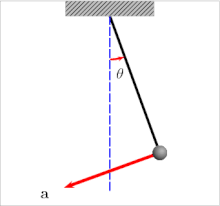#length
One of the greatest questions of all time, has to be “whatIStime?”.
Is time defined by what we see on our mechanical clocks? Does time stop? Does time have a constant speed? Does time have a beginning and end? There are countless questions we can ask about time but what are the answers?
We are all familiar with time, our whole lives revolve around it. Yet, we don’t know everything there is to know about it. We can start by measuring time.
Hours, minutes and seconds were first adopted by the Babylonians, some say they even invented time. However, they could have never actually invented time but they made a system for time. The days were 12 hours and the nights 12 hours. The hours were broken down into 60 minutes and those that needed even more precise numbers, they broke down those 60 minutes into 60 equally big parts (60*60=3600 seconds).
To measure the time they used the human heart-beat, one second was the duration of time between the two heart-beats of a healthy human (in a relaxed state).
The first mechanical clocks were invented in the 1200s. They had a pendulum that swung back and forth. There are different types of clocks and therefor the clocks we use in our everyday lives are referred to as mechanical clocks. Biological clocks are quite important to us, the heart-beat is an example of a biological clock and even a woman’s menstrual cycle is a biological clock (probably not the kind of clock you’d want to watch).
Today we also use atomic clocks, they’re so precise that they will either speed up or slow down by one second in a million years. They’re based on specific type of radiation from the Cesium atom. The Second is now defined by this radiation and perhaps in some years we’ll invent even better clocks with yet another definition of time. However by current definition, a second is the duration 9,192,631,770 cycles of radiation in a transition, or energy level change, of the Cesium atom.

Picture above: A pendulum showing the acceleration (a) and velocity (v) vectors.
Is time a vector or scalar quantity?
Firstly, scalars are quantities that are fully described by a magnitude alone (Time and Mass) Vectors are quantities that are fully described by both a magnitude and a direction (Velocity and Force).
Time is said not to have any direction, only magnitude. Therefor it is a scalar quantity.
Another question that tends to puzzle humanity is about space and it’s length. Is space endless? Has it always existed? Is space just the distance between two objects or is it something more? If you took away ever last atom and object, would there still be space or would there be nothing? Even then you can ask, what IS nothing? Does ‘nothing’ exist?
One thing is for sure, we can measure length. There are many different measurements for length all over the world; Feet, yards, centimeters, etc. However the result is always the same, no matter how you measure. The distance that is there, is there and will not change no matter which measurement you decide to use. However, the international measurement tends to be in meters. The meter is defined by the movement of light.
A meteris the length of light moving in free space during a time interval of 1/299 792 458 of a second.
Why do we use light to define certain measurements? The light speed in a vacuum is the same no matter when or where we measure and it doesn’t even matter if the light source is moving relative to us.
It’s extremely hard to be 100% precise when talking about length and all length measurements are a little uncertain. Your height for example, let’s say your height is 162 cm. That means you’re between 161,5 cm and 162,5 cm. However, we’re getting better and better at being even more precise and inventing new measurements that will help us in the future.
Sources:
http://www.physicsclassroom.com/class/1dkin/u1l1b.cfm
Physics book: H.Aschehough @ Co. [W. Nygaard] 2007
In English, we often use imperial units rather than the metric system. This post is about common imperial units of length.
We use feet and inches to talk about a person’s height.
We use feet and squared feet to talk about the size of a building.
We use yards to talk about distances in football. The penalty area = the 18-yard box. He scored from thirty yards out!
A chain is not used as a measurement but is the length of the pitch in cricket.
Furlongs are used to measure courses for horse racing.
Miles are used to measure distances for travelling between places.
Via the Learn British English website.
Post link
no,you put a ruler in your mouth
https://fail-fandomanon.dreamwidth.org/536997.html?thread=3256512933#cmt3256512933
Post link

length, breadth, depth, height, death.
A Clear Advantage: Renegade Fantasy Extension Sleeve - NS Novelties
For the man who values performance… the Renegade Fantasy Extension Sleeve provides added girth and length for heightened sensations and enhanced visual excitement. Made from odorless, body safe TPeE
Post link
I found out today that one of my good friends is the kind of person that I loathe. They came flat out and told me that they hate seeing more than five paras on an OC. They actually said they would rather them have a nice FC and a short two para bio. She’s a canon rper. She is the type of person that makes me nervous about approaching canon muses.
Post link
Often, a road trip is as much about the journey as it is, the destination. It seems as though the designers of our interstate highway system had both in mind. Our highways snake across the country, passing through cities and swerving to avoid natural obstacles. As a result, some are far more direct than others.
For this post, I’ve mapped the longest interstate highways in the continental USA alongside the geodesic between each highway’s endpoints. I then graphed the differences in distances, and the respective sinuosities. The sinuosity of a path is simply its length divided by the shortest distance between its endpoints.
From these data, we can see that north-south trending highways (odd numbered) tend to be less direct, though I-35 is a good exception to that rule. I-25 is both the shortest and most sinuous highway shown, bouncing east to avoid passing directly through the Rocky Mountains. And I-95, which isn’t quite continuous, can’t be blamed for straying from the direct route, given that most of it would need to be a bridge over the ocean.
Among the east-west highways shown, I-20 has the lowest sinuosity, while I-90, which dips south to avoid the Great Lakes and Canada, has the highest. Note that I-90 is the longest interstate highway in the USA, but its geodesic is actually shorter than that of I-80!
Data sources: https://www.census.gov/geo/maps-data/data/tiger-line.html (primary road shapefile)
http://www.fhwa.dot.gov/reports/routefinder/table1.cfm
Post link









